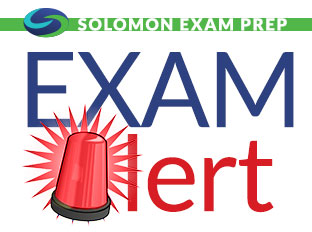Effective July 11, 2014, FINRA revised its rules on filing retail communications. The new rules do not require firms to file research reports on securities listed on national exchanges, except for certain research reports on investment companies. Continue reading
Effective July 11, 2014, FINRA revised its rules on filing retail communications. Generally, FINRA requires firms to file retail communications on registered securities within ten business days of first use. The new rules exclude from filing research reports on securities listed on national exchanges. However, firms must still file certain research reports on investment companies. Specifically, research reports on open-end investment companies, unit investment trusts, and face-amount certificate companies must still be filed if they will be distributed to prospective investors.
Additionally, FINRA clarified that free-writing prospectuses that are exempt from the SEC’s filing requirements do not need to be filed with FINRA.
Retail communications are written communications, including electronic communications, that will be distributed or made available to more than 25 retail investors within any 30-calendar-day period. “Retail Investor” is defined as any person other than an institutional investor, regardless of whether the person has an account with the firm.
A research report is a written communication that includes information, analysis, and/or recommendations on a security.
Open-end investment companies, also known as mutual funds, are companies that offer shares of a portfolio of securities in the form of a fund to the public. Every time shares in the fund are purchased, the shares are issued new by the mutual fund company. Additionally, when shareholders wish to sell their shares, they must sell them back to the mutual fund company. The mutual fund company will then “redeem” them and expire the shares.
A unit investment trust (UIT) is an investment company that buys and holds a fixed portfolio of securities that are put into a trust in “units” that are sold to investors (unit holders). UITs have a stated termination date that varies according to the type of investments in the portfolio. A UIT in bonds may have as much as a 30-year life; a UIT in stocks may mature in one year or less. Unit holders receive a share of the principal at termination, and any income earned is distributed to investors in periodic payments of dividends or interest.
A face-amount certificate company is an investment company that issues debt securities called face-amount certificates backed by assets such as real property or other securities. Issuers of face-amount certificates promise to pay a stated amount (face-amount) to the investor at a specified time in the future. In return, investors pay the issuer a fixed amount of money either as a lump sum payment or in periodic installments. The rate of return is calculated by comparing the amount paid into the investment and the face-amount received.
A free-writing prospectus (FWP) is any written offer to sell or a solicitation to buy the securities in an offering, distributed during the cooling-off period, after a registration statement has been filed. It is not required to have the detail or depth of information of the preliminary prospectus.
This alert applies to the Series 6, Series 7, Series 24, Series 26, Series 62, Series 82, and Series 99.
Source: FINRA Regulatory Notice 14-30: SEC Approves Amendments to FINRA Rule 2210 to Exclude Research Reports on Exchange-Listed Securities From Filing Requirements and Clarify the Standards Applicable to Free Writing Prospectuses


 Effective October 27, 2014, FINRA has revised its arbitration rules regarding when arbitrators may refer matters to FINRA for disciplinary investigation. Arbitrators may now make such referrals during an arbitration if they become aware of an issue that they believe poses a serious threat that will harm investors unless immediate action is taken. Previously, arbitrators could not make referrals until the conclusion of a case.
Effective October 27, 2014, FINRA has revised its arbitration rules regarding when arbitrators may refer matters to FINRA for disciplinary investigation. Arbitrators may now make such referrals during an arbitration if they become aware of an issue that they believe poses a serious threat that will harm investors unless immediate action is taken. Previously, arbitrators could not make referrals until the conclusion of a case.